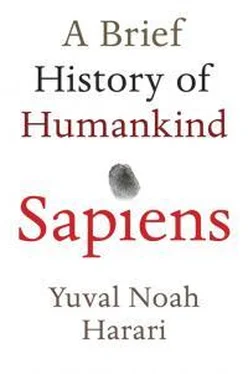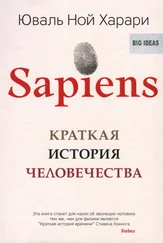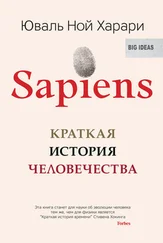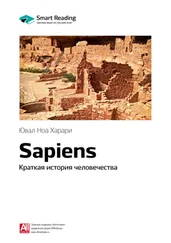Such racist theories, prominent and respectable for many decades, have become anathema among scientists and politicians alike. People continue to conduct a heroic struggle against racism without noticing that the battlefront has shifted, and that the place of racism in imperial ideology has now been replaced by ‘culturism’. There is no such word, but it’s about time we coined it. Among today’s elites, assertions about the contrasting merits of diverse human groups are almost always couched in terms of historical differences between cultures rather than biological differences between races. We no longer say, ‘It’s in their blood.’ We say, ‘It’s in their culture.’
Thus European right-wing parties which oppose Muslim immigration usually take care to avoid racial terminology. Marine le Pen’s speechwriters would have been shown the door on the spot had they suggested that the leader of the Front National go on television to declare that, ‘We don’t want those inferior Semites to dilute our Aryan blood and spoil our Aryan civilisation.’ Instead, the French Front National, the Dutch Party for Freedom, the Alliance for the Future of Austria and their like tend to argue that Western culture, as it has evolved in Europe, is characterised by democratic values, tolerance and gender equality, whereas Muslim culture, which evolved in the Middle East, is characterised by hierarchical politics, fanaticism and misogyny. Since the two cultures are so different, and since many Muslim immigrants are unwilling (and perhaps unable) to adopt Western values, they should not be allowed to enter, lest they foment internal conflicts and corrode European democracy and liberalism.
Such culturist arguments are fed by scientific studies in the humanities and social sciences that highlight the so-called clash of civilisations and the fundamental differences between different cultures. Not all historians and anthropologists accept these theories or support their political usages. But whereas biologists today have an easy time disavowing racism, simply explaining that the biological differences between present-day human populations are trivial, it is harder for historians and anthropologists to disavow culturism. After all, if the differences between human cultures are trivial, why should we pay historians and anthropologists to study them?
Scientists have provided the imperial project with practical knowledge, ideological justification and technological gadgets. Without this contribution it is highly questionable whether Europeans could have conquered the world. The conquerors returned the favour by providing scientists with information and protection, supporting all kinds of strange and fascinating projects and spreading the scientific way of thinking to the far corners of the earth. Without imperial support, it is doubtful whether modern science would have progressed very far. There are very few scientific disciplines that did not begin their lives as servants to imperial growth and that do not owe a large proportion of their discoveries, collections, buildings and scholarships to the generous help of army officers, navy captains and imperial governors.
This is obviously not the whole story. Science was supported by other institutions, not just by empires. And the European empires rose and flourished thanks also to factors other than science. Behind the meteoric rise of both science and empire lurks one particularly important force: capitalism. Were it not for businessmen seeking to make money, Columbus would not have reached America, James Cook would not have reached Australia, and Neil Armstrong would never have taken that small step on the surface of the moon.
MONEY HAS BEEN ESSENTIAL BOTH FOR building empires and for promoting science. But is money the ultimate goal of these undertakings, or perhaps just a dangerous necessity?
It is not easy to grasp the true role of economics in modern history. Whole volumes have been written about how money founded states and ruined them, opened new horizons and enslaved millions, moved the wheels of industry and drove hundreds of species into extinction. Yet to understand modern economic history, you really need to understand just a single word. The word is growth. For better or worse, in sickness and in health, the modern economy has been growing like a hormone-soused teenager. It eats up everything it can find and puts on inches faster than you can count.
For most of history the economy stayed much the same size. Yes, global production increased, but this was due mostly to demographic expansion and the settlement of new lands. Per capita production remained static. But all that changed in the modern age. In 1500, global production of goods and services was equal to about $250 billion; today it hovers around $60 trillion. More importantly, in 1500, annual per capita production averaged $550, while today every man, woman and child produces, on the average, $8,800 a year. 1What accounts for this stupendous growth?
Economics is a notoriously complicated subject. To make things easier, let’s imagine a simple example.
Samuel Greedy, a shrewd financier, founds a bank in El Dorado, California.
A. A. Stone, an up-and-coming contractor in El Dorado, finishes his first big job, receiving payment in cash to the tune of $1 million. He deposits this sum in Mr Greedy’s bank. The bank now has $1 million in capital.
In the meantime, Jane McDoughnut, an experienced but impecunious El Dorado chef, thinks she sees a business opportunity – there’s no really good bakery in her part of town. But she doesn’t have enough money of her own to buy a proper facility complete with industrial ovens, sinks, knives and pots. She goes to the bank, presents her business plan to Greedy, and persuades him that it’s a worthwhile investment. He issues her a $1 million loan, by crediting her account in the bank with that sum.
McDoughnut now hires Stone, the contractor, to build and furnish her bakery. His price is $1,000,000.
When she pays him, with a cheque drawn on her account, Stone deposits it in his account in the Greedy bank.
So how much money does Stone have in his bank account? Right, $2 million.
How much money, cash, is actually located in the bank’s safe? Yes, $1 million.
It doesn’t stop there. As contractors are wont to do, two months into the job Stone informs McDoughnut that, due to unforeseen problems and expenses, the bill for constructing the bakery will actually be $2 million. Mrs McDoughnut is not pleased, but she can hardly stop the job in the middle. So she pays another visit to the bank, convinces Mr Greedy to give her an additional loan, and he puts another $1 million in her account. She transfers the money to the contractor’s account.
How much money does Stone have in his account now? He’s got $3 million.
But how much money is actually sitting in the bank? Still just $1 million. In fact, the same $1 million that’s been in the bank all along.
Current US banking law permits the bank to repeat this exercise seven more times. The contractor would eventually have $10 million in his account, even though the bank still has but $1 million in its vaults. Banks are allowed to loan $10 for every dollar they actually possess, which means that 90 per cent of all the money in our bank accounts is not covered by actual coins and notes. 2If all of the account holders at Barclays Bank suddenly demand their money, Barclays will promptly collapse (unless the government steps in to save it). The same is true of Lloyds, Deutsche Bank, Citibank, and all other banks in the world.
It sounds like a giant Ponzi scheme, doesn’t it? But if it’s a fraud, then the entire modern economy is a fraud. The fact is, it’s not a deception, but rather a tribute to the amazing abilities of the human imagination. What enables banks – and the entire economy – to survive and flourish is our trust in the future. This trust is the sole backing for most of the money in the world.
Читать дальше



![Юваль Ной Харари - Sapiens. Краткая история человечества [litres]](/books/34310/yuval-noj-harari-sapiens-kratkaya-istoriya-cheloveche-thumb.webp)





![Юваль Ной Харари - 21 урок для XXI века [Версия с комментированными отличиями перевода]](/books/412481/yuval-noj-harari-21-urok-dlya-xxi-veka-versiya-s-ko-thumb.webp)


